After walking from Lisbon to Coimbra, I arrive in Porto. I am immediately struck by its beauty, and I grant myself a day of rest here. Well, rest … Walking around in this extremely hilly city may not fit everyone’s idea of relaxation. Do what you want, but I highly recommend having a look around Porto before you start or continue your pilgrimage from here.
(This is the second part in a series of three from my pilgrimage from Lisbon to Santiago de Compostela. The other two parts cover the walk from Lisbon to Coimbra and from Tui to Santiago.)
Porto Sight-seeing
The Caminho enters Porto from the south, and takes you into the proper old town via the bridge Ponte Luis I. It’s the most stunning introduction to the city.
Imagine arriving here 400 years ago, when the place looked much the same, only even busier, with ships coming and going from all over the world. You would realize that Portugal may be a small country, but not one you mess with. Even by the standards of today it’s an impressive display of grandeur.
The waterfront on the northern bank of Douro river in Porto is as cute as it gets. You can have this view from across the river, in the Gaia district. It’s a pleasant 15-20 minute walk via the bridge on the last photo, but if you’re lazy or just want the cheapest possible Douro cruise, a river taxi goes straight across all the time, costing three euro each way.
There are many river boat trips to choose between. Some last the whole day and include stops at wineries further up the river.
I keep my distance from other people as much as I can, because coronavirus, so I stay away from the boat trips. Tourists tend to be really bad at following health guidelines. A perfect example is these guys on a river cruise, passing below me as I walk across the bridge. In normal times, I’m sure it can be a great way to see the city and its surroundings.
Apparently, every major city in Portugal must have at least one charming giant animal sculpture made out of plastic garbage. This is Porto’s contribution, a rabbit that lives on the corner of Rua Guilherme Gomes Fernandes and Rua Dom Afonso III, easy to find on the south bank of the river.
I don’t believe in anything that can’t be scientifically proven, but places of worship still fascinate me. Cathedrals built many centuries ago often even impress me.
The one in Porto is great, and offers some excellent views thanks to its location at the top of a hill. After getting my credencial, my pilgrim passport, stamped, I pay a three euro fee to get access to the inner and upper sections of the cathedral.
Most of what is on display is what you’d expect from a cathedral, but I find these four interesting and/or surprising examples of Christian art.
Top left; someone commissioned a painting of a lion, from a painter who clearly had just a vague idea about what a lion actually looks like. That’s the most human lion face I’ve ever seen.
Top right: A painting of a woman wearing a ballgag would not be among my guesses for what I’d find, but here we are. The inscription makes it slightly better. “Secretum extraneo ne reveles” is from the biblical Proverbs 25:9, “Do not betray another’s confidence”. I’ll give it the benefit of the doubt.
Bottom right: You don’t mess with the archangel Michael. My Latin is a bit rusty, but I read the text as “I came to help the people of God out of the church”. It’s a bit unclear to me what’s going on, but it’s an intense scene.
Bottom left: Another case of fascination with foreign species. “Paint me an ostrich hunting scene!”, must have been the order. “Sure, but what’s an ostrich?” “Uhm, a big bird with wild eyes and kick-ass feet, I think.” And that’s what they got.
What I found among the archways of the cathedral was so rewarding, that I now head over to another religious building nearby, the Monument Church Of St Francis. I’m greated by a Jesus that certainly didn’t skip leg day. Or any other day of workout, it seems.
Many of the artworks are on display in baroque rooms that are pieces of art in themselves, both at the cathedral and here at St Francis.
It’s not how I would want my living room to be, but it’s always good to be reminded about how the church always has used lavish decorations to show off the style of God, to prepare people for what they might miss out on if they don’t pay up for a ticket to Heaven.
Porto has many monumental buildings. This is the massive church Serra do Pilar.
I don’t know if it’s on purpose or for financial reasons, but most buildings in Porto all look at least their age. You sort of feel they might at any minute crumble and fall down on you, but at the same time they are so full of beautiful details that it’s impossible not to go close enough to get a good look.
Equally well balancing between decaying and charming is the pedestrian street Rua do Cedofeita. After a visit to the large and old Agramonte cemetery nearby (open 8:30 – 17:30 all days), the street feels particularly lively, even now during covid times.
As I walk down this street, my feet inform me that I have now reached the limit of how much sight-seeing they are willing to grant me on this day of “rest”. I head back to my sleeping quarters and prepare for an early start the next morning.
Day One
It’s raining when I wake up . I don’t know it yet, but it’s going to be my only wet day on the trail. I’m lucky. Coastal Portugal in October can be full of rain. Not a problem. I have a light set of waterproof jacket and pants, as well as a cover for my backpack.
After many hot days on the Caminho up until today, I actually look forward to feeling some cooling rain on my face. And Porto looks good, even in the rain.
This is my view from beneath the Arrábida bridge, looking back after walking about three kilometres along the river from the cathedral.
The Arrábida bridge is an architectural icon of Porto, but looking up at it from the trail, it looks more like a giant zipper in the sky than anything else.
Beyond the Arrábida bridge lies the river mouth of the Douro. The feeling of being in a big city ends, now the Caminho becomes a walk along the sea. I spent my childhood playing on beaches and rocks bordering the very same Atlantic Ocean. I am happy to be here.
Going to the beach is not just for sunny days. The heavy waves of Portugal’s west coast can wash all kinds of maritime mysteries up onto the beach. Especially during rough weather.
This is Praia Ingleses, the first beach past a cluster of lighthouses at the spot where the river meets the ocean. I walk this way instead of straight north from Porto, because I want to get a taste of the Coastal Way. If I like what I see enough, I may stay on the coast the entire way up to the border to Spain.
It’s not beach all the way to Spain, of course. The next four kilometres are like this, as I walk towards the port of Matosinhos.
It’s a Sunday, and the locals are not bothered by the rain at all. They’re out surfing, playing beach football, and generally combining exercising with enjoying themselves. I can easily relate to this. It is exactly what I am doing myself.
The walk north from Matosinhos is picturesque, as long as keep your head turned out towards the sea, and not inland. An enormous oil refinery is a stark contrast to the beautiful beaches. The refinery has been closed down, but it’s still an eyesore. I almost wish for even more fog and lower visibility.
Further north again, and we’re back to consistently pretty scenery. I walk past more beaches than I can remember the names of. If everyone in Porto wants to be at the beach at the same time, space for everyone won’t be a problem.
When I reach Praia de Vila Cha, it’s been 15 kilometres of beach since I stepped onto Praia Ingleses. The atmosphere has changed a lot. These are not city beaches. Now the vibe is one of fishing villages that happen to have beaches next to them. Somehow the air is saltier, too.
Passing the beaches near Mindelo, I decide thatI’ve had enough Coastal Way. It’s certainly pretty, and an easy walk, but it gets too monotonous for me. It has nothing to do with the rain. I love the fresh air it brings.
The coastal trail itself is a bit concerning. To protect the fragile natural environment along the sea, much of the trail is on boardwalks like the one in the photo. Keeping these walkways in a decent condition is an eternal battle against nature. The rough weather is wearing down the construction faster than it can be maintained. Many places I have to make long or short detours inland, around sections that are being repaired. I decide that I will feel better following the ancient old route, the Central Way.
Just before sunset I arrive in the town Vila do Conde. My watch tells me I have walked 40 kilometres. In rain like this, that’s enough.
Day Two
For the first several kilometres out of Vila do Conde, I walk next to an aqueduct in suspiciously good condition. It’s not a Roman one, being “merely” 300 years old. It still brings a nice touch of history to this walk.
I don’t talk to many people on my way, but I keep getting into heated arguments nevertheless. Generally with dogs, who insist that I must be in the wrong place, while I feel like I’m exactly where I’m supposed to be.
Most of them are quite polite, however, and the rabid ones are all behind solid fences.
The cats of the Caminho are much nicer. Some may insist on a bit of cuddling or a belly rub. Most of them are just annoyed that I’m disturbing them with my camera just as they move in on some unseen prey, or simply are busy catching a bit of sun.
There’s not much wildlife to see on the Caminho. Generally just roadkill, really.
This fire salamander is probably the prettiest corpse I see between Porto and Santiago.
After yesterday’s rain, I have to find a way around many a puddle to keep progressing. At times, the mud stuck under my shoes makes me several centimetres taller than I usually am.
This particular rural road is neither on the Coastal Way or the Central Way, but on an unofficial route. It will bring me off the Coastal and back onto the Central, following an almost straight line between Vila do Conde and Rates via Seixo.
The fresh, relaxing smell of this eucalyptus forest near Seixo, is beautifully complemented by red ferns of fall covering the base of all the trees. It’s a bonus you get if you do this walk in October.
In the village Rates I’m reunited with the Central Way to Santiago de Compostela. Unlike almost every other church and chapel this year, the old church of the Monastery of Rates is actually open for visitors. I collect another well-earned stamp in my passport.
It’s a wonderful building, which in some form or shape has been in this spot since at least sometime in the 800s.
After Rates the clouds disappear, allowing the sun to bring more color back to the world. I want to walk down every trail to see where it leads, but I do my best to stick to the ones that my GPS tells me is the quickest way to Santiago.
Through Pedra Furada village, I must walk closer to fast traffic than I prefer to. At least they have put up a sign warning of free-roaming pilgrims in the area.
The sidewalk is a little bit too tightly integrated with the road, though. It makes me walk faster to get out of here before an accident happens. Maybe that’s the flawed logic of the drivers as well.
Fortunately, just a little bit further up the road, the trail invites me back into the forest. When the invitation looks like this, it’s impossible to turn it down.
As I approach Barcelos, I’m happy to discover that I have less than 200 kilometres to go.
It’s a weird feeling. When I began my walk in Lisbon about two weeks ago, the remaining distance was six hundred something kilometres. At the time, that number meant nothing to me. It felt infinitely far away.
Now, with two thirds of the walk behind me, the number 199 feels so small that in my head, I’m almost done. Hence my smile. The human brain works in mysterious ways.
Day Three
I sleep well in Barcelos, so I have no trouble getting out on the road quite early. The sun isn’t quite up yet when I start walking. This is another bonus you get when you walk in October.
The sunrise itself may not always be that spectacular, but the “god rays” of light that form in forests when the sun is burning off the morning mist, they’re quite something to behold. It feels like an angel may appear in front of you any second, to cheer you on.
It’s an uneventful day. I just walk and walk.
There are some highlights, like this 16th century bridge in the middle of nowhere, Ponte das Tabuas de Aguiar. That’s fine. When there’s not much to see along the trail, that’s typically when you enter a somewhat meditative state. I love that state of mind. Any problem, big or small, can be solved in a rational way when this happens.
Shops are few and far between throughout many sections of the Caminho. And even when there is a small shop/bar in the village you walk through, it is likely closed when you’re there in the middle of the day.
Sometimes a kind soul will put up a “pilgrim shop” like this one outside their house. Take whichever item you choose, and leave 1 euro. It can be an opportunity to have a relatively cold drink on a hot day, or some fresh produce or delicious home-made pastries. It has never saved my life, but it’s a nice surprise every time. Someone who don’t know me thought of me, and did their best to help me along.
For the rest of my life, seeing this photo will immediately make me remember a particular smell. A freshly harvested corn field looks only marginally better than a fracking site. And yet there’s a way to make it even worse, and that is to by applying tons and tons of fresh manure to it.
Of course, this needs to be done to fertilize the ground, but it certainly doesn’t make for pleasurable hiking. There. I just gave you an argument for not doing the Caminho in October.
My sense of smell is thanking me when I leave the fields of mold and go back into the forest. Eucalyptus beats shit any day.
This section is nice, but I’m not so happy to wander on a paved road again. And there’s quite a lot of that on the Central Way on Caminho Portugues, to be honest.
I have been unable to find a reliable estimate for the number of churches and chapels in Portugal, but I do know that wherever I go, no matter how small the village, there will be one. Sometimes there are even churches with no village around them.
Here’s the parochial church of Piães, Santo André de Vitorino. It’s the best church I’ve seen for days. There’s actually a toilet open for pilgrims here!
The Portuguese like to paint their houses in striking colors. I take a shady self-portrait on this radiant wall on a house just south of Ponte de Lima.
Doing laundry by hand down by the river is something I see a few times on my walk through Portugal. More often than I expected. I hope they do it because they for some reason prefer to do it that way.
The women, always a woman, would smile and wave as I pass, making me feel like I am in some kind of traditional Portugal theme park.
Entering Ponte De Lima from the south is a treat. First you pass through some cozy villages, then you enjoy an easy walk along the river for a bit , and finally you enter a fantastic pedestrian boulevard, the Plátanos park.
Arriving here is among the most atmospheric moments on my entire walk. The town is lucky to have such a grand public place they can spend their time in whenever they want to.
A few hundred metres further up the river you find a bridge across the Lima, the one that the whole town got its name from. On the opposite side of the river, a church and this statue greets every pilgrim in particular.
The bridge is known as Ponte Romana, although the only part of the bridge that actually is from Roman times doesn’t actually have any water running under it any more. That old part is the section of the bridge just beyond the red house in this photo.
The town is happy to emphasize its ancient history. An eerie troop of Roman soldier cut-outs is lined up on one side of the river, while the statue of a legionnaire on horse on the other side appears to urge them on to cross the river.
If I lived here, I would dress up as a soldier every night. Then I would stand still between the cut-outs, until some nocturnal tourist came by, ready to be scared the hell out of. But that’s just me, I guess.
It is a magnificent bridge, even the newer part of is at least 600 years old. And at night it serves up some of the best golden arches I know. The whole town is also nicely illuminated in the evenings.
This is a great place to stop for the night for any pilgrim with at least a little energy left in them for an evening stroll.
Day Four
Another morning, and I continue across the bridge north towards Santiago as soon as there’s daylight. These two pilgrims are going in the opposite direction, to find their way to Fatima.
There are significantly more pilgrims on the trail now after Porto than before. I’m a fast walker, though, so I rarely see the same pilgrim more than once. Whenever I walk past someone, we exchange a “Bom caminho!”, and then we’re on separate journeys again. It’s a great walk for an introvert.
From Ponte de Lima it’s a slight ascent up towards Labruja village. The trail follows an old paved road, but a new highway runs parallell with this one, so there’s barely any traffic.
Moss and leaves are beginning to pull the old road apart. Give it a century, and this too will look like the old Roman sections.
Somehow the trail doesn’t go close to any of them, but Labruja has its fair share of churches, too.
I find it amazing how the Vatican and/or these small villages manage to pay for the maintenance of so many so old buildings. This can’t last forever. Or much longer than it already has. Can it?
The section of the Caminho that leads to the top of Labruja hill is infamous for being probably the toughest part of the entire Caminho Portugues.
I’m sure this is a challenge if you travel by wheelchair, or if it’s been raining like crazy so that the trail becomes a river. By Norwegian hiking trail standards, however, it’s a pretty typical hike.
My guess ia that the reputation of this trail as being challenging, is mainly a result of so many of those who hike through here being inexperienced hikers, often on a once-in-a-lifetime proper walk. They struggle, and afterwards they will happily and proudly spread the rumors of their hardship to anyone willing to listen.
Maybe some pilgrims really are better off on the flat boardwalks of the Coastal Way, but anyone at a reasonable level of fitness can easily navigate this hill. Do not be afraid of it.
There is a stone cross both near the top of Labruja hill and just beyond it. They’re both surrounded by thousands of small rocks and other items that pilgrims have carried with them from home.
By dropping off whatever you carry somewhere along the pilgrim route, you symbolically leave behind both the item and any specific worry or sorrow you have carried with you until now.
So many different kinds of items can be found in these piles.
In addition to plain rocks, there are seashells and decorated rocks, often with inspirational writing on them. Some people leave behind laminated poems or greetings or kind words to family members and friends who have left this world. Or anything else. Anything goes.
The Shire has got nothing on these forests.
I wouldn’t be the least surprised if I met a group of Hobbits on their way to Mount Doom here. I suddenly remember that I’ve skipped both second breakfast and elevenses today.
I encounter no Nazgûl, warg, or Uruk-hai, but hanging outside one of the albergues I do find this Camino monster.
Many hiking shoes that have failed their masters are turned into trail decorations. It’s a reminder that unless you take good care of your feet, your shoes will eat them raw.
The closer I get to Santiago, the better the trail markings are.
From here on in, it’s basically impossible to get lost. Yellow arrows everywhere.
Some pilgrims travel by bicycle. A good number of pilgrims on foot do not consider the bicyclists to be proper pilgrims. It’s rarely mentioned, but the many slightly modified traffic signs along the way are clear indications of this sentiment.
Just south of the fortress town Valença I call it a day. Walking from Porto to Valença has taken me four full days. The official distance along the Central Way is 123 kilometers. I managed to squeeze quite a few more kilometres out of the walk, mainly thanks to my decision to mix the Coastal Way and the Central Way a little bit.
Day Five
Valença is both nicer than and not as nice as I thought. I could easily spend a full day exploring the many secrets of the old town inside the fortress walls. And the views from the walls are great in every direction.
On the opposite side of the river Minho lies Spain, with Valença’s Spanish twin, Tui. They’re both sporting medieval architectural wonders. It’s like the two medieval cities are locked in some kind of eternal staring contest.
In the photo you see one of the walls of the Portuguese Valença fortress in front, and the cathedral of Tui, Spain, in the background.
The not so nice side of Valença, is that as soon as the shops open, and they do open early, busloads of Spanish shoppers will invade the fortress. They’re on the hunt for cheap towels, blankets and bed sheets, which for some reason are significantly cheaper here than in Spain. The shopkeepers may love it, but I would have preferred more quiet streets.
The fortress may have been even more hard to get into in the old days, but even today some invaders are seriously struggling with it.
At the top of the eastern wall of the “Fortaleza de Valença”, I sit down and take a good look back at Portugal. It’s been a privilege to walk through most of the length of this old and proud country. Its historical riches has left behind many a ruin, but even those bits that are slowly falling apart contain much beauty.
Thank you for having me, Portugal.
I pick the nicest one of the churches inside the fortress walls, and I go inside and collect my stamp for the day.
This is Igreja de Santo Estevão, Saint Stephen’s Church, and the priest on duty warmly receives me as if I was Stephen himself. I get both my stamp and a thousand wishes for a safe and rewarding journey.
From the north end of the fortress, I look down at the bridge that soon will get me across to Spain. There’s no international checkpoint whatsoever, not even now in the middle of the coronavirus pains. My only challenge before I can cross over into Spain is; how do I get down there?
The fortress is obviously designed to be hard to get into. They did it so well that I barely can find my way out of it. Eventually I get through the maze of tunnels, stairs and hidden passages.
Finally outside the fortress walls, I quickly find my way to the bridge. Now all it takes to get into Spain and the city Tui is a simple walk across the river.
“Bom Caminho!” becomes “¡Buen Camino!”, and “Obrigado” becomes “Gracia”. In all other ways, the pilgrimage continues unchanged.
I’ll be back soon with a photo journal covering the walk between Tui and Santiago de Compostela. See you there!
Accommodation Info
As a pilgrim, you have many special options for accommodation, organized by churches, monasteries, and various local heroes, who will never let a pilgrim down.
In the time of coronavirus, a lot of those options are/were unavailable. Also, I’m an introvert, so I’m happy to avoid people whenever I can. To others, of course, meeting new people and fellow pilgrims is the main reason they go. If that is you, seek out albergues that are open. Otherwise, or whenever you need a single night away from the rest of the pilgrims, maybe you will find useful my list of places I stayed.
Please note that these places are not necessarily recommended by me. I just briefly let you know what I thought about each place.
Porto
Cheap and clean rooms at a convenient location. It’s a five minute walk from the train station, ten minutes from the cathedral. The people in the reception speak English, and they are extremely eager to sell you day trips and cruises on the Douro.
Vila do Conde
Probably not the cheapest option in town, but it was the first hotel I saw when I walked into town, when I was cold and wet and darkness was about to fall. It felt like a business hotel, with a very stylish room and bathroom. The breakfast was excellent and well-handled under the strict coronavirus regime.
Barcelos
Extremely comfortable and well-equipped apartment at a decent price. Please note that you must pick up the key from the reception at Art’otel, an actual hotel two hundred meters down the road, and that reception doesn’t stay open until very late. (I’m guessing eight or nine in the evening, but check!) Also, you have to go back there in the morning and drop off your keys in a keybox. Nice and clean shared bathrooms.
Ponte de Lima
Huge and very nice hotel. English-speaking people in the reception. Gave me a nice discount, not sure whether it was because I was a pilgrim or because it was slow days at the hotel. Nice location bordering the best park in town, Plátanos, and quite close to the bridge as well.
Valença
Old hotel, something you will sense the second you enter the building. Very pleasant room rates, though, so it’s still good value for your money. Good location, only a minor detour from the official Caminho, just before you enter the actual fortress of Valença. As an exhausted pilgrim, you’ll likely be just as happy here as in the more modern Hotel Lara next door at twice the price. Just east of here there are two pizzerias (rough Pizzaria Joes and fancy Trattoria Casa di Mamma) that both stay open late and do take-away.
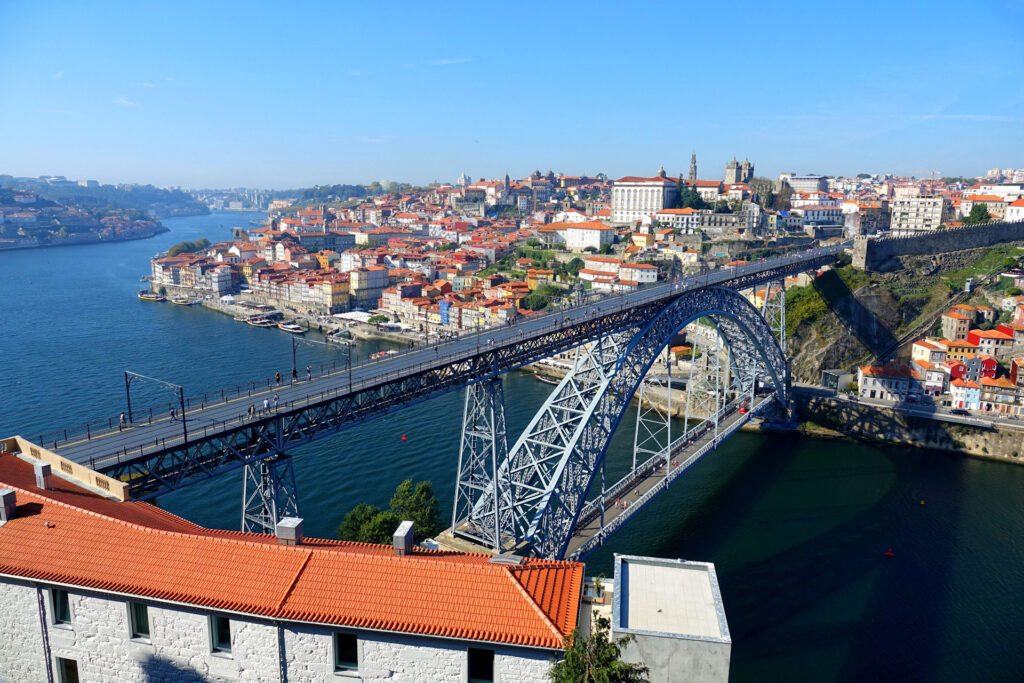


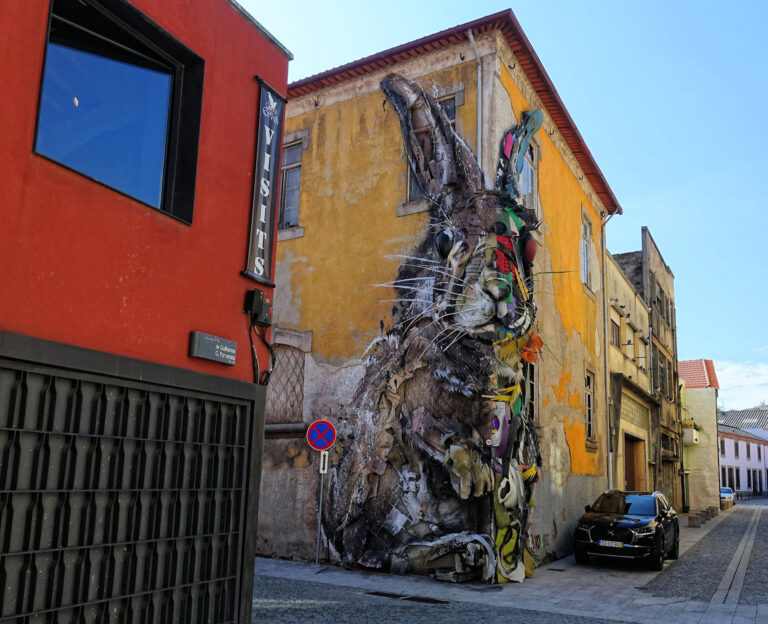
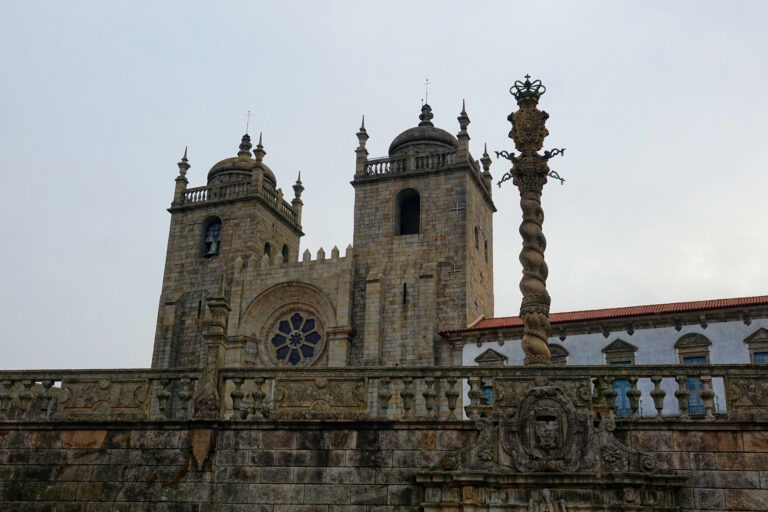
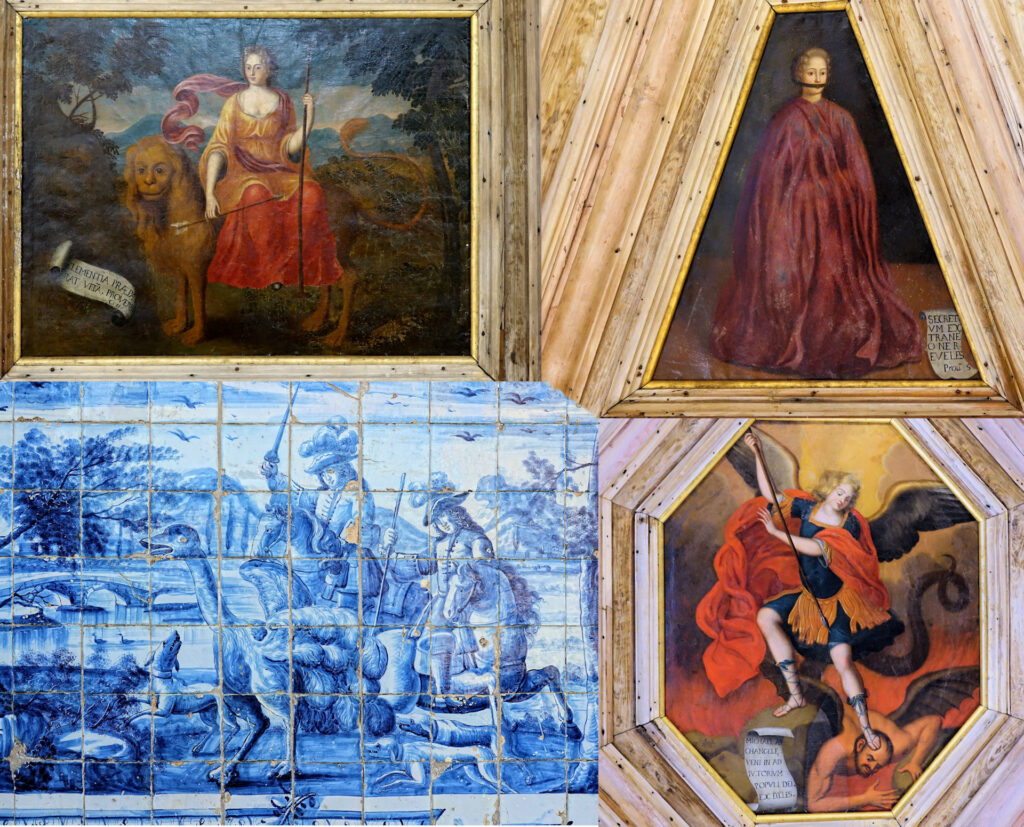


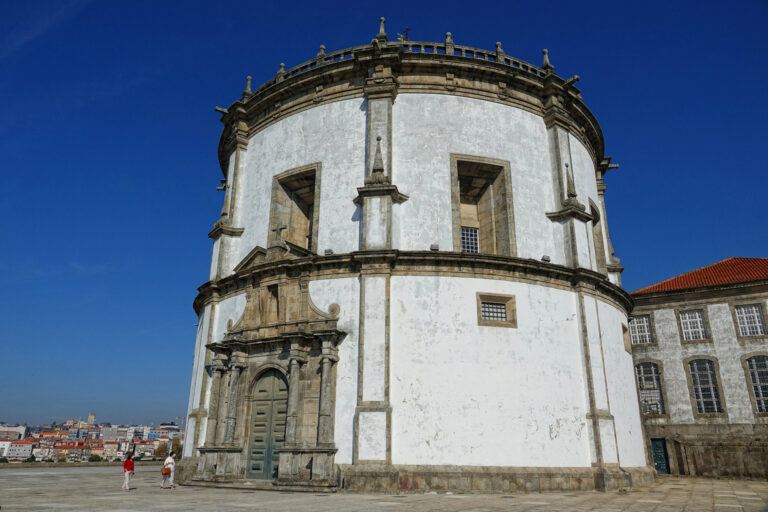
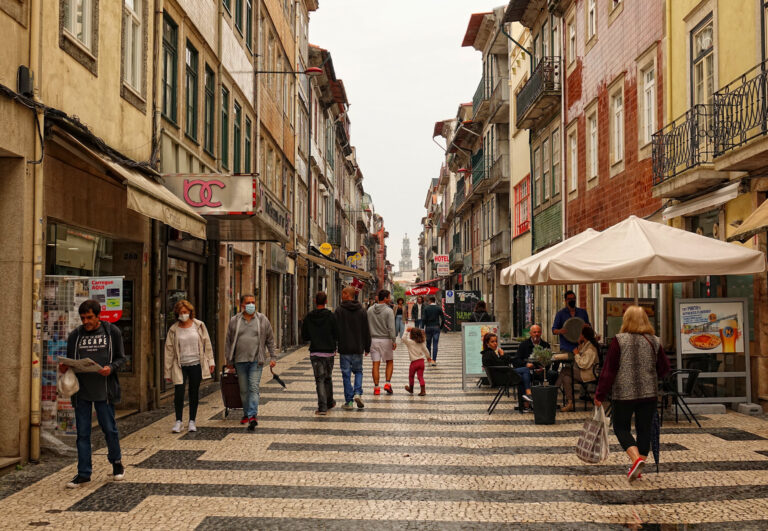
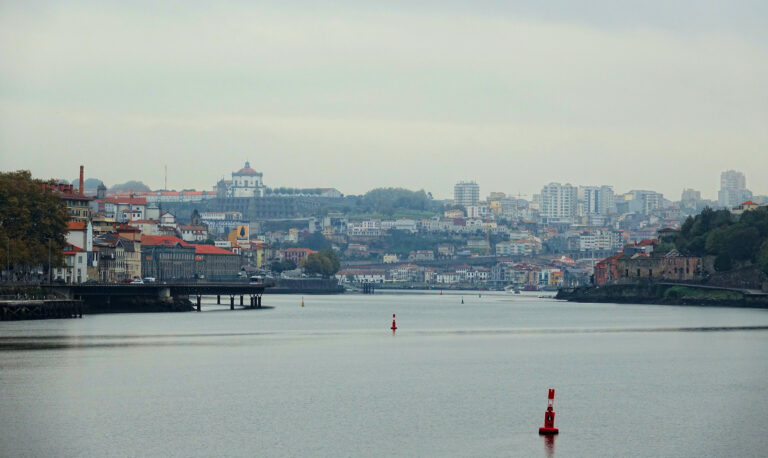
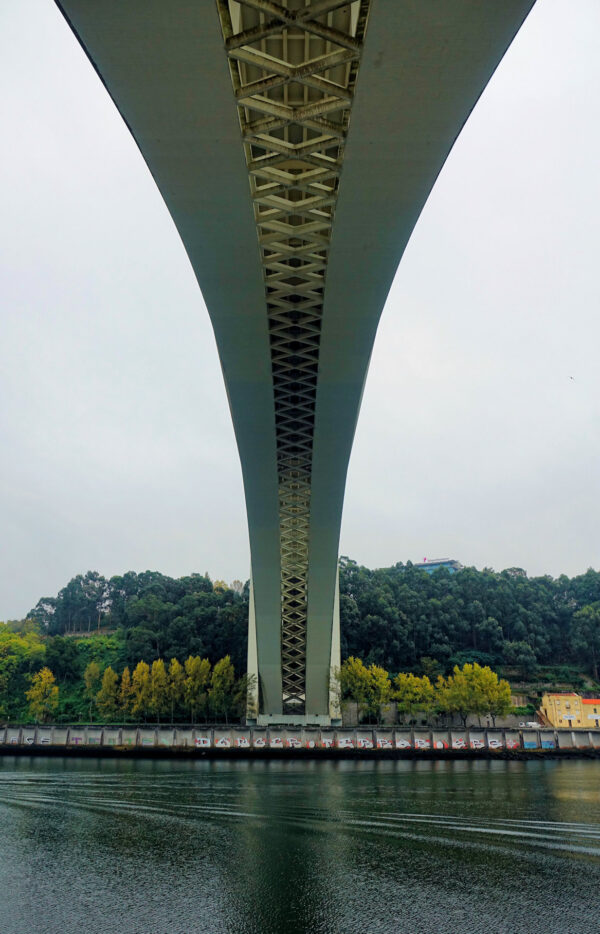
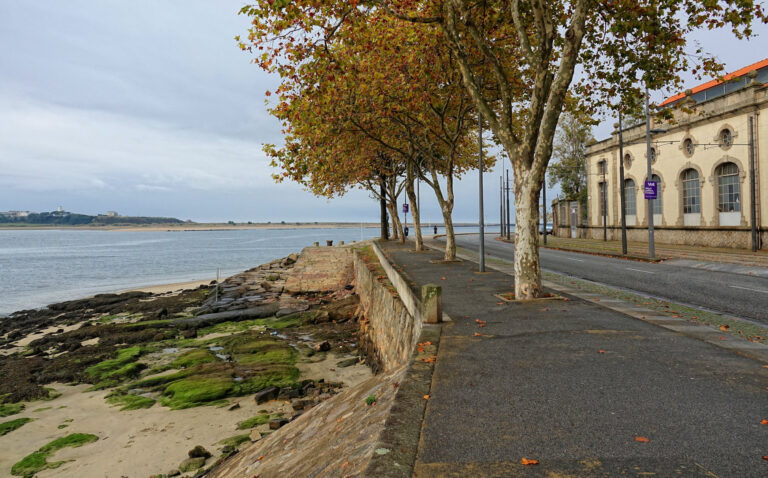

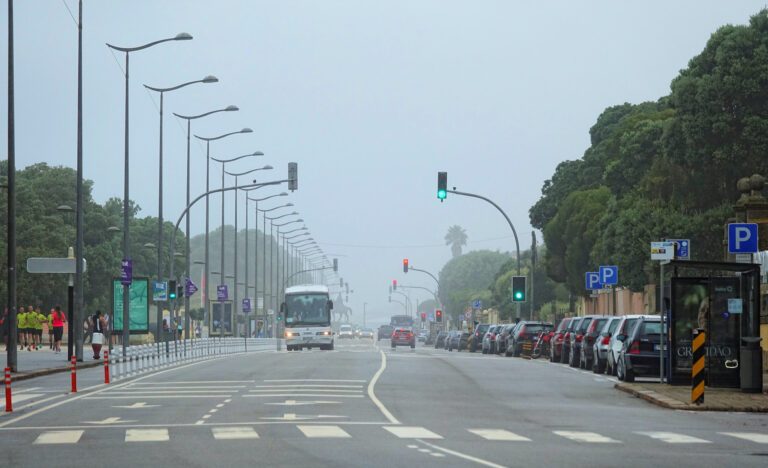
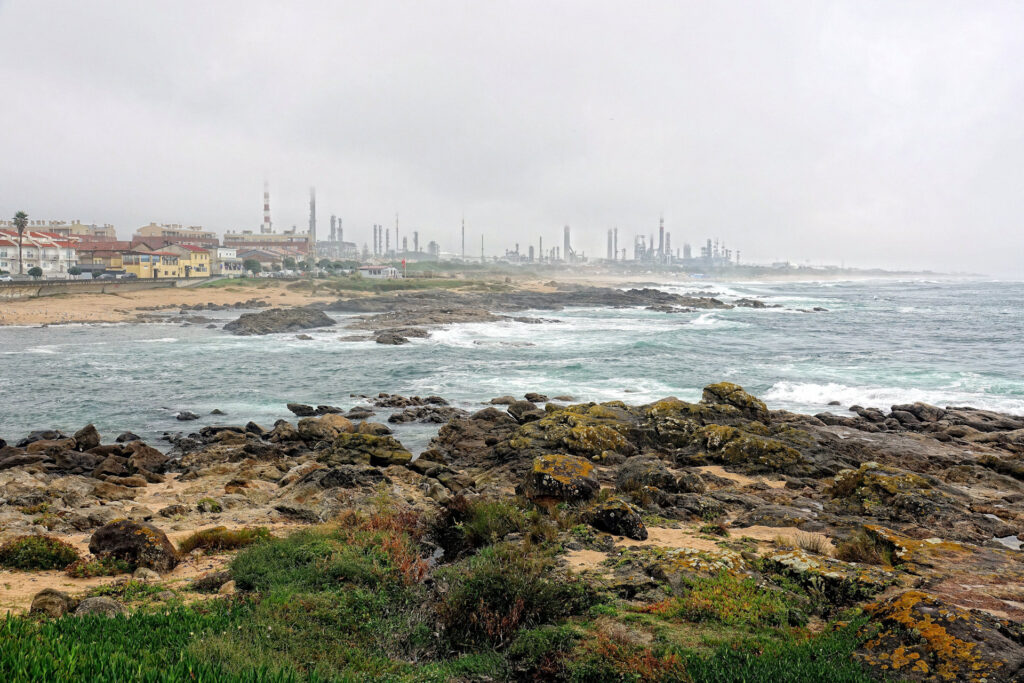
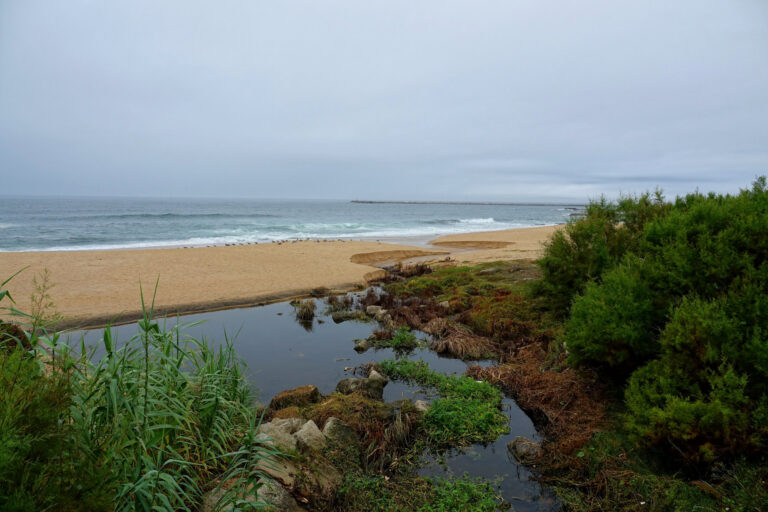
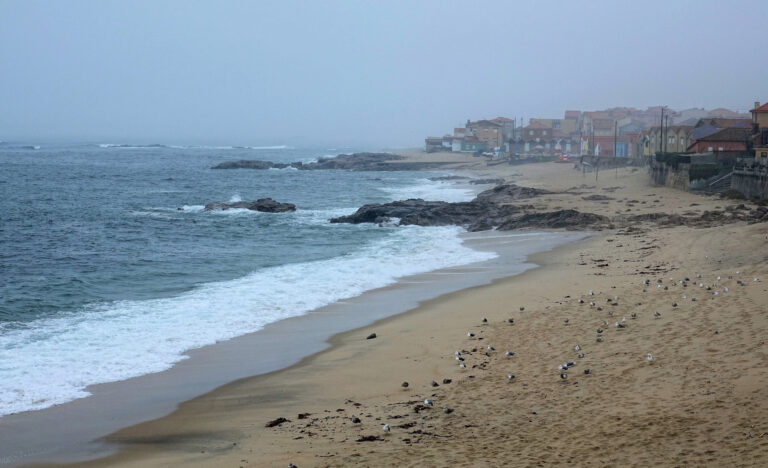

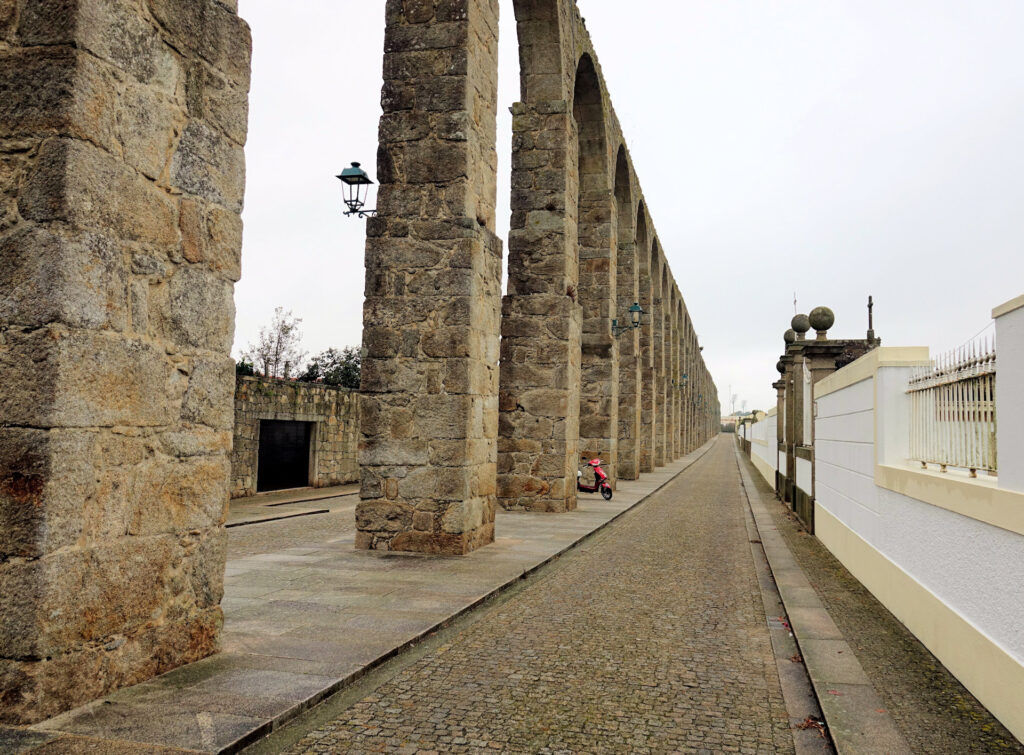

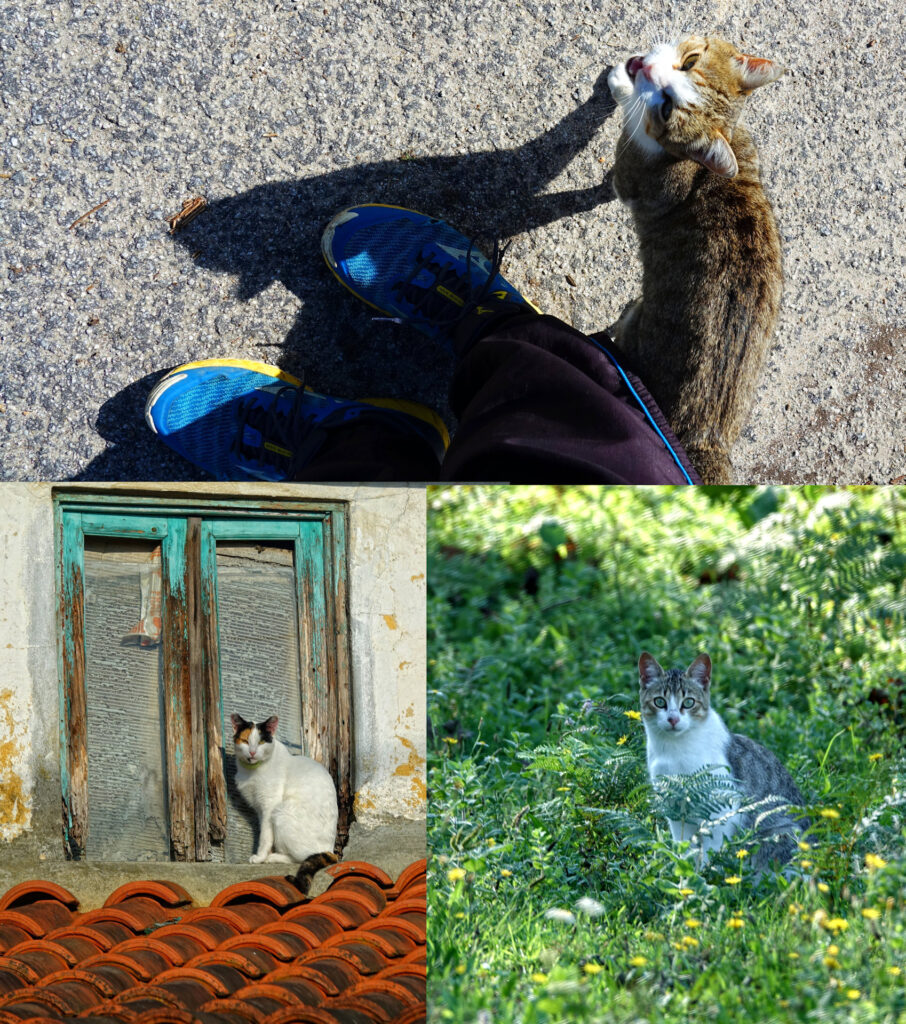
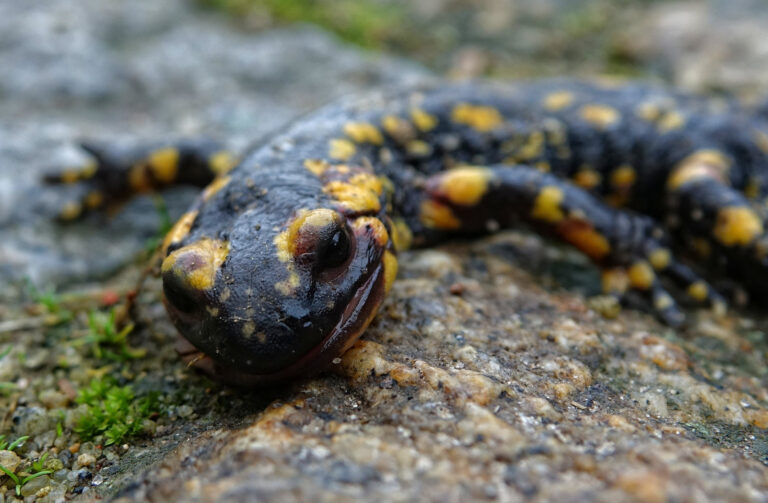
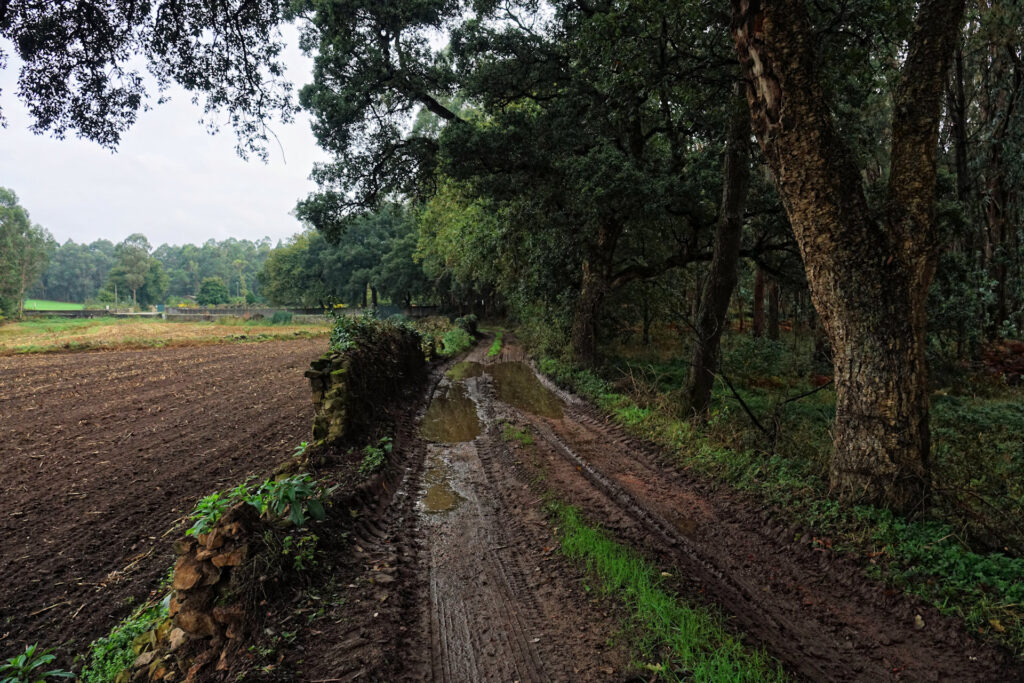
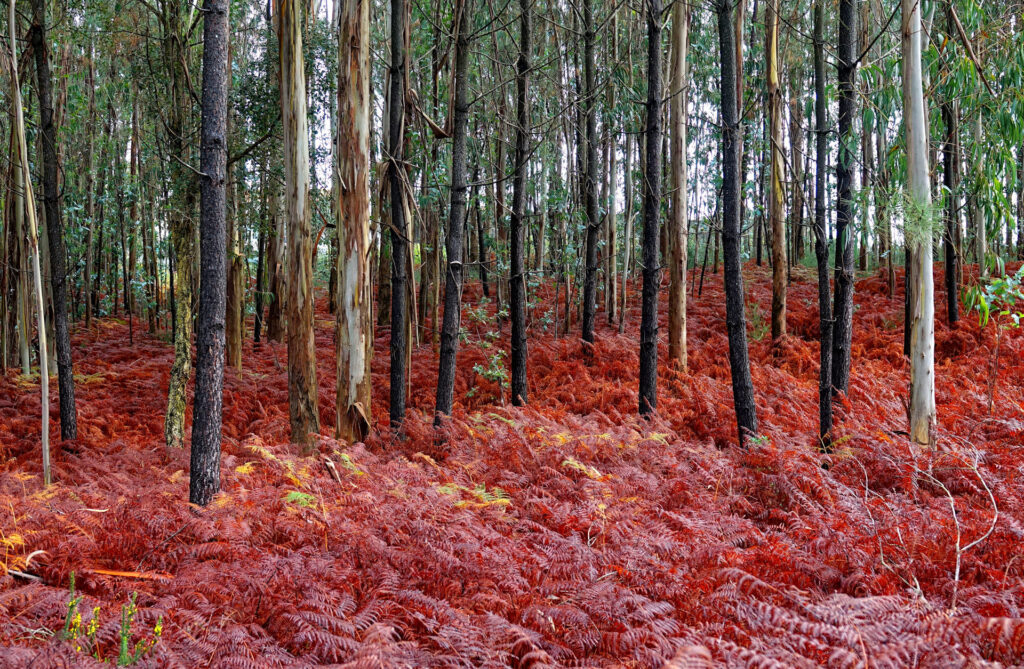

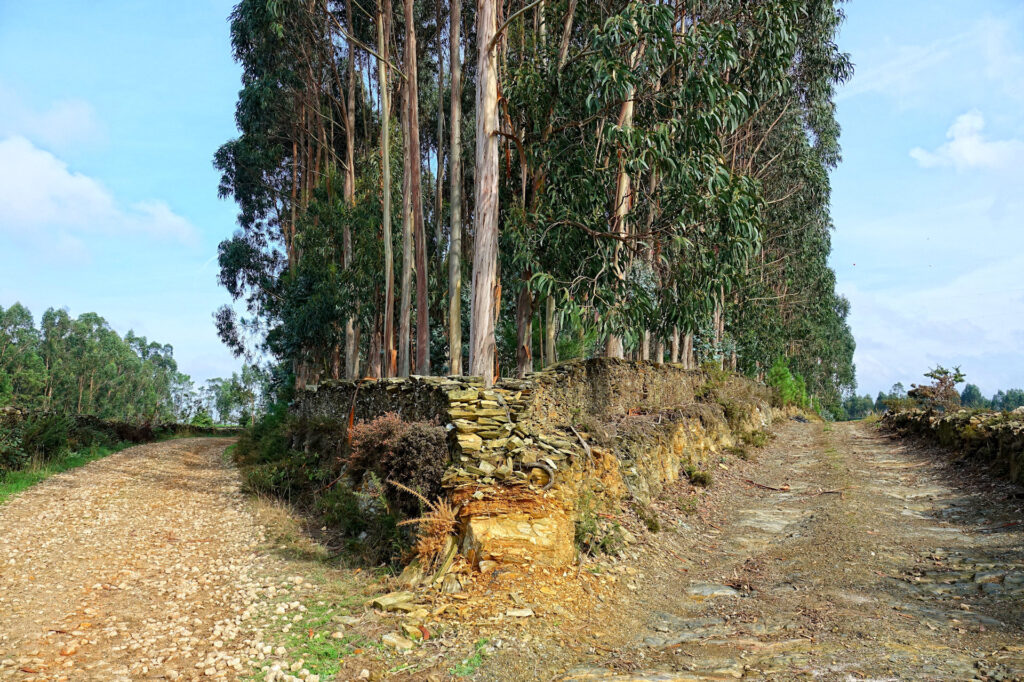

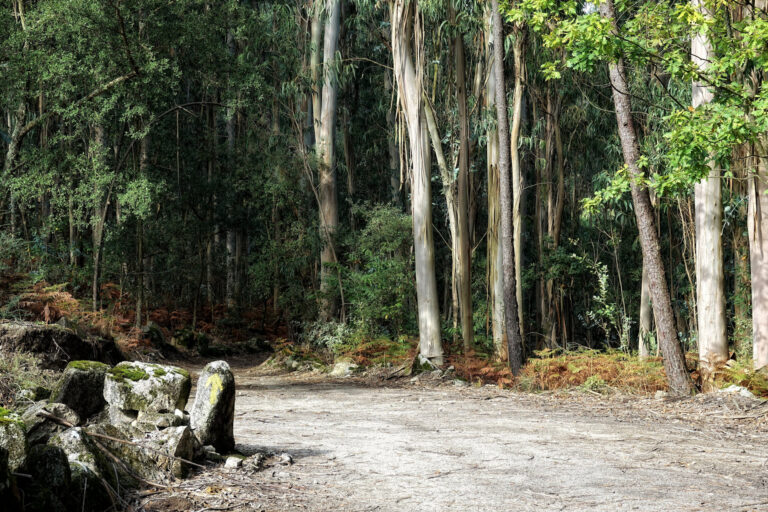
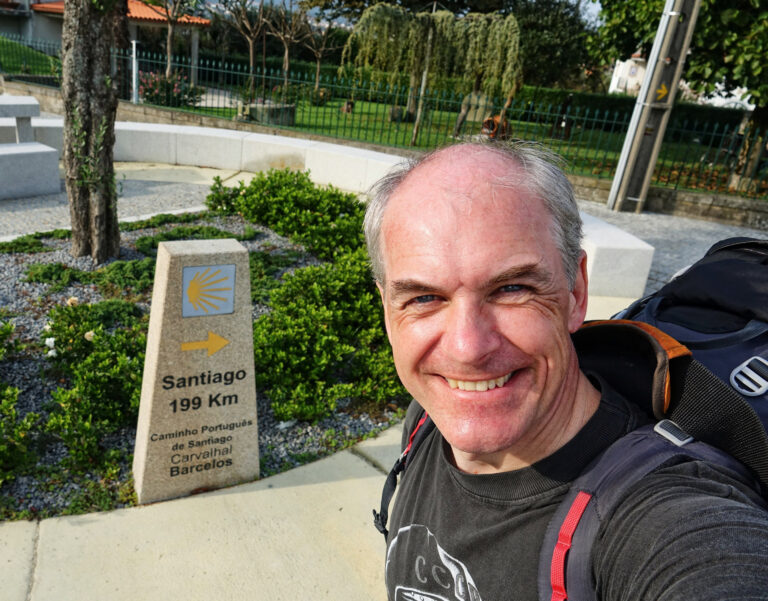
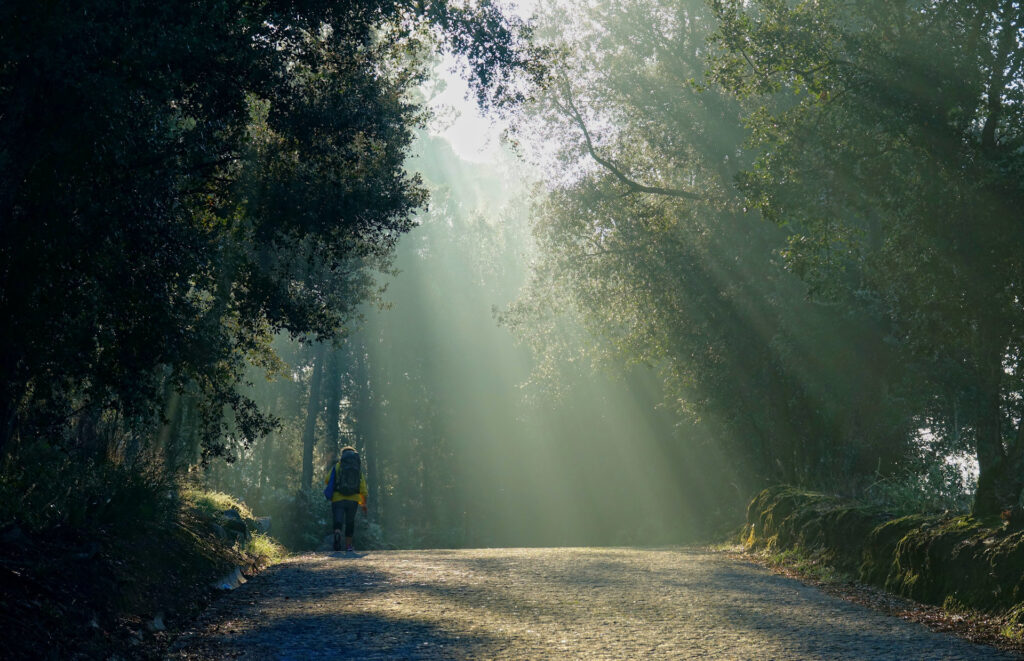



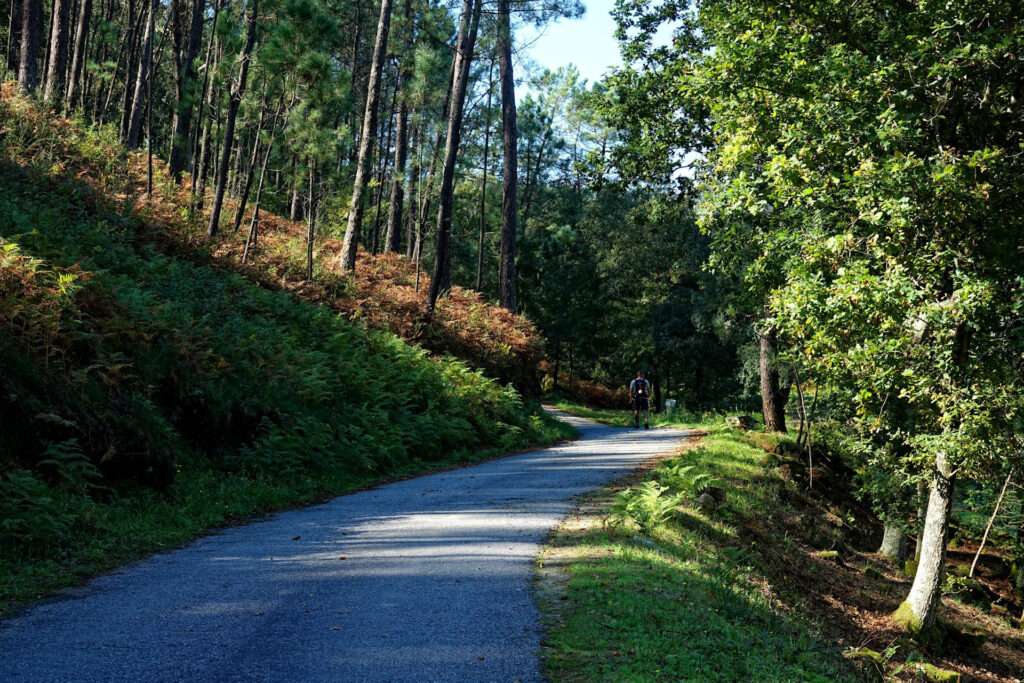
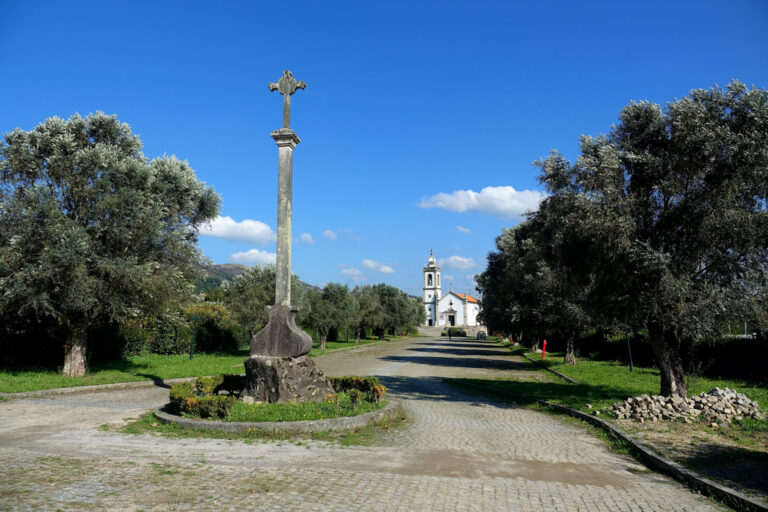
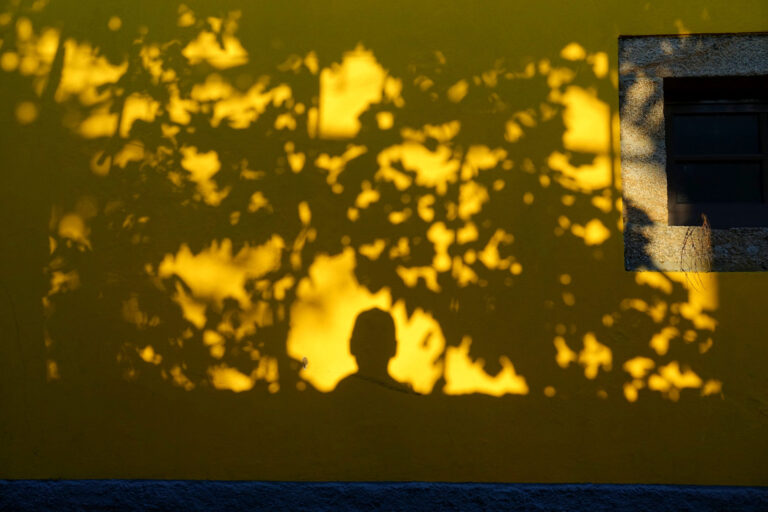
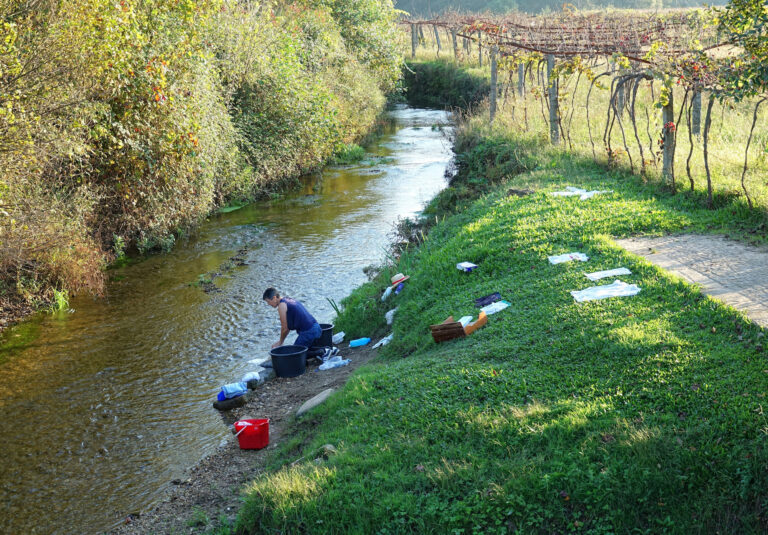
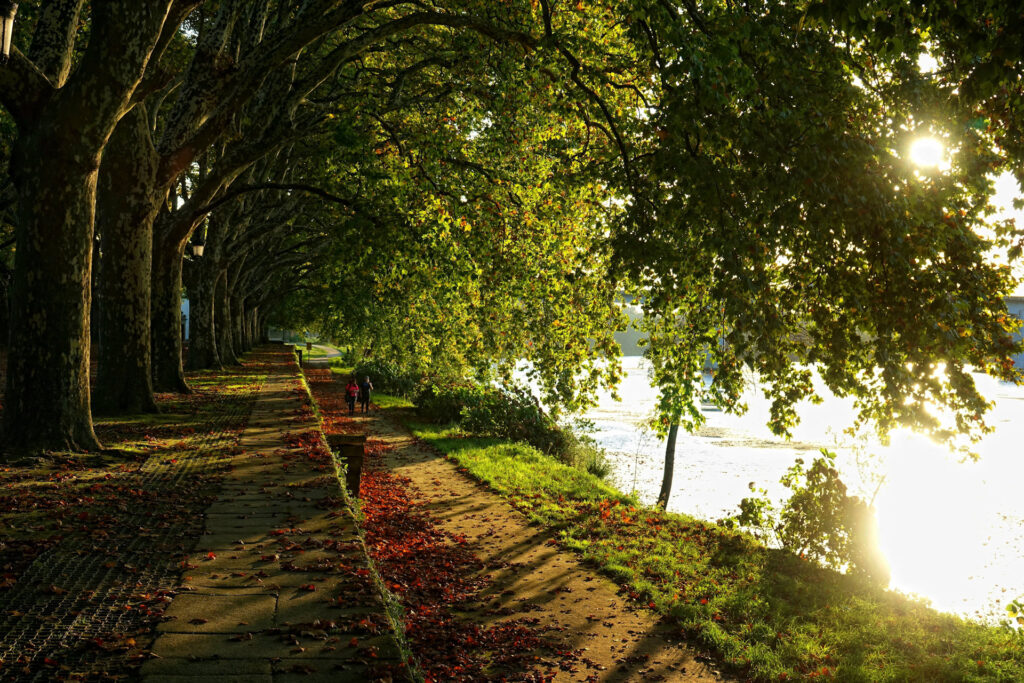
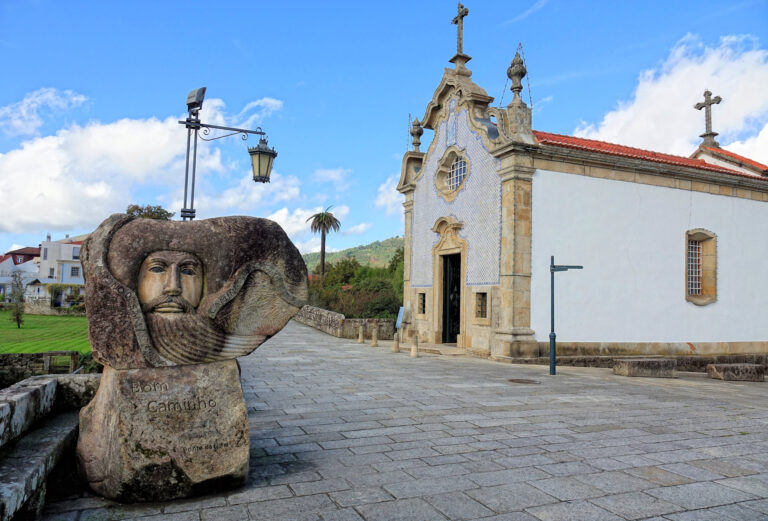
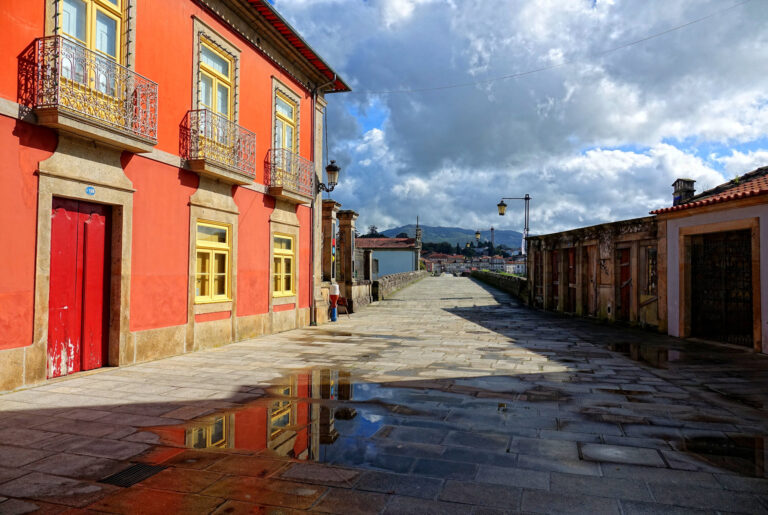
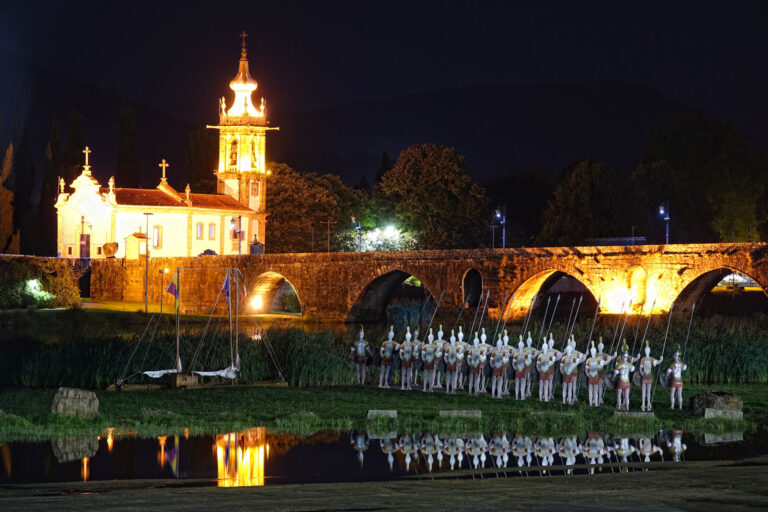

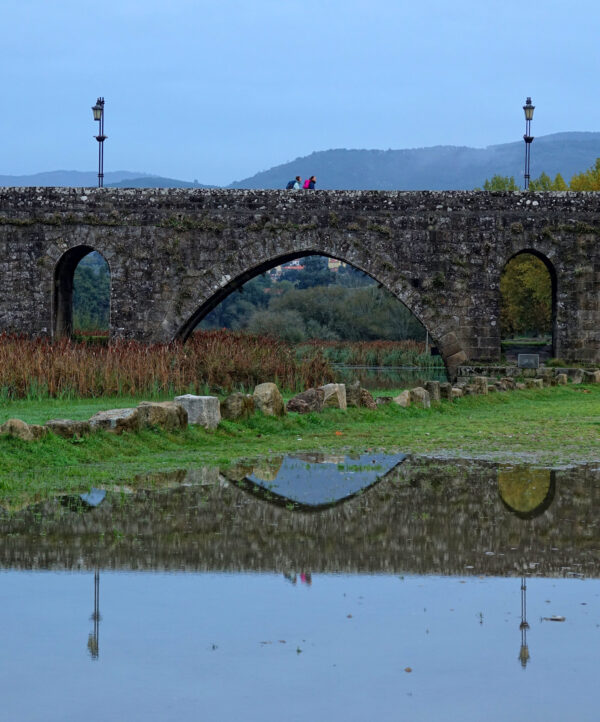
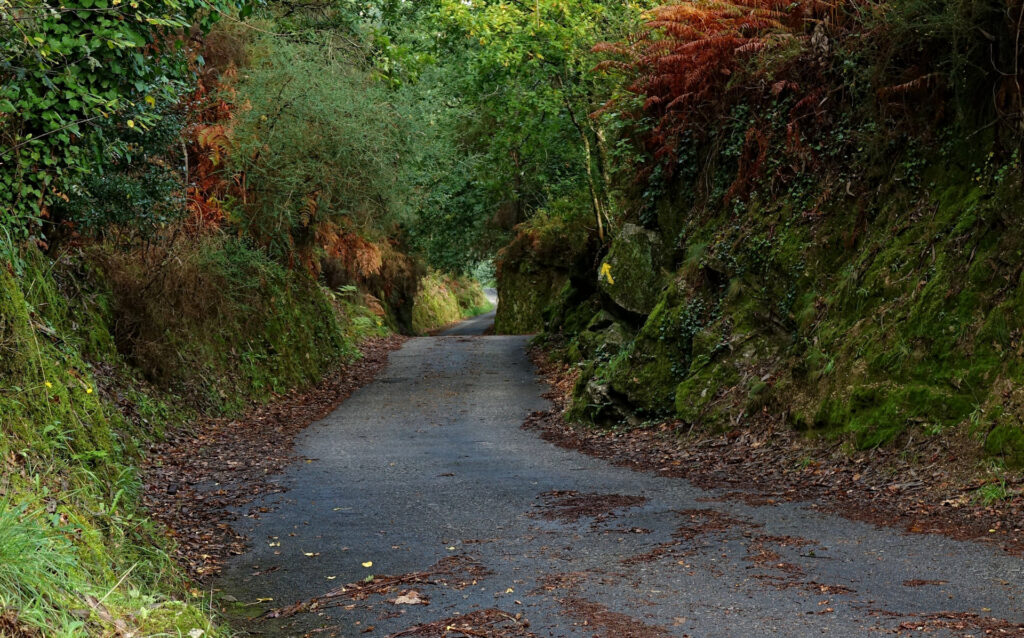

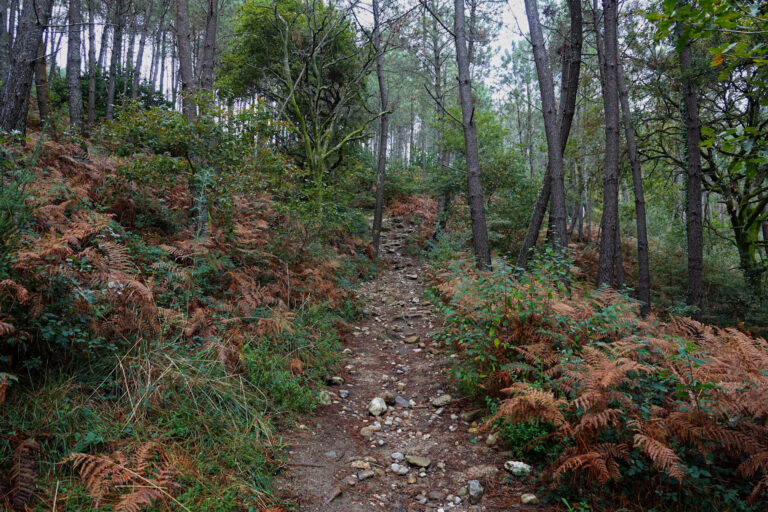
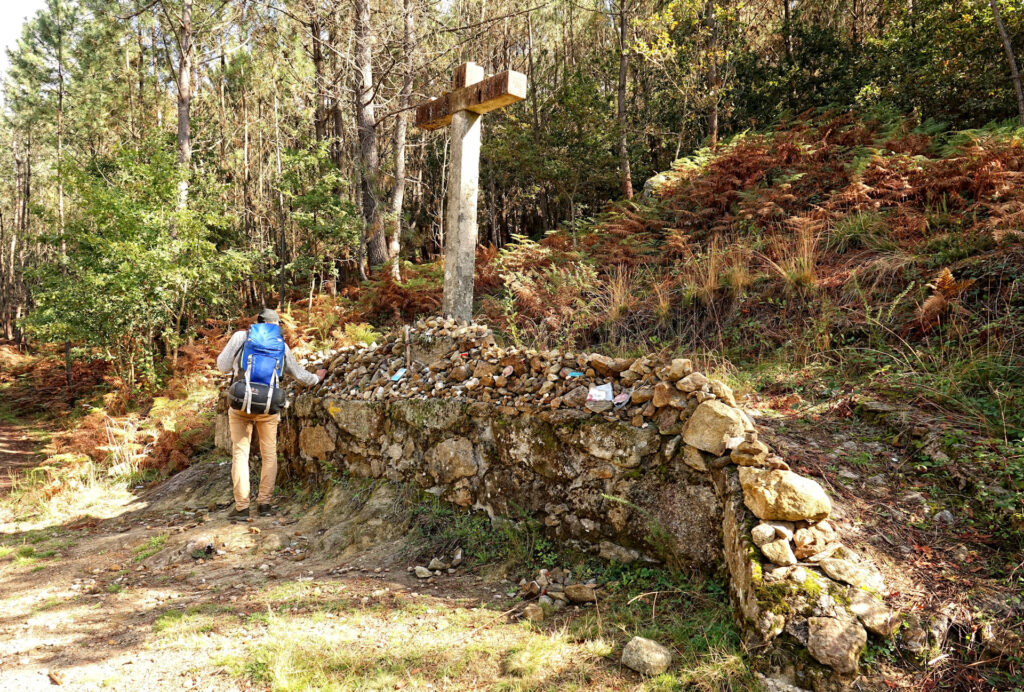
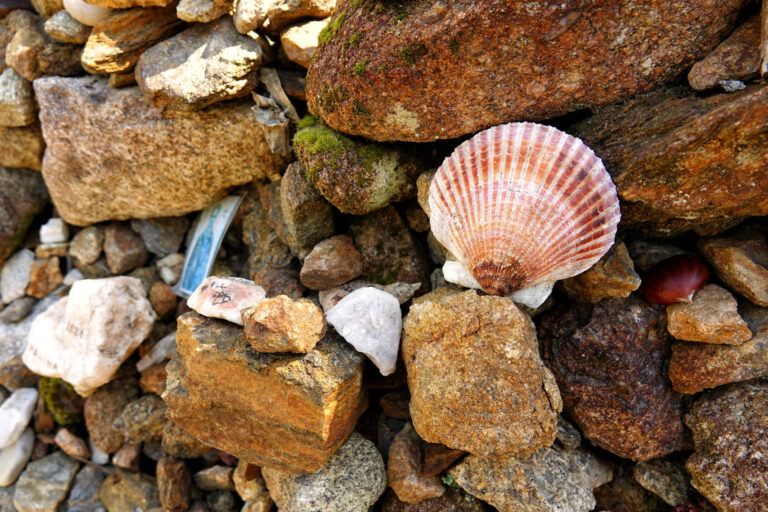

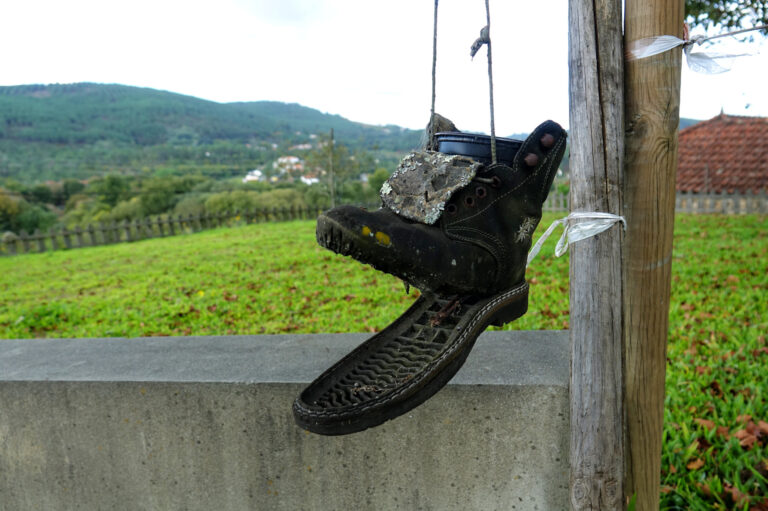
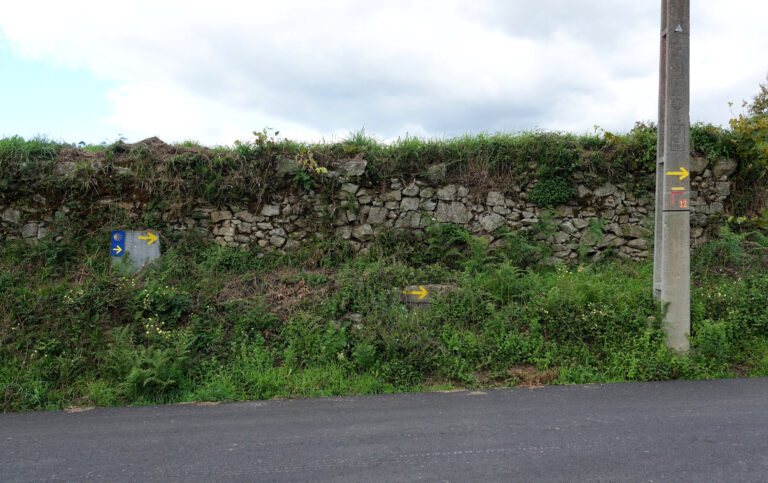
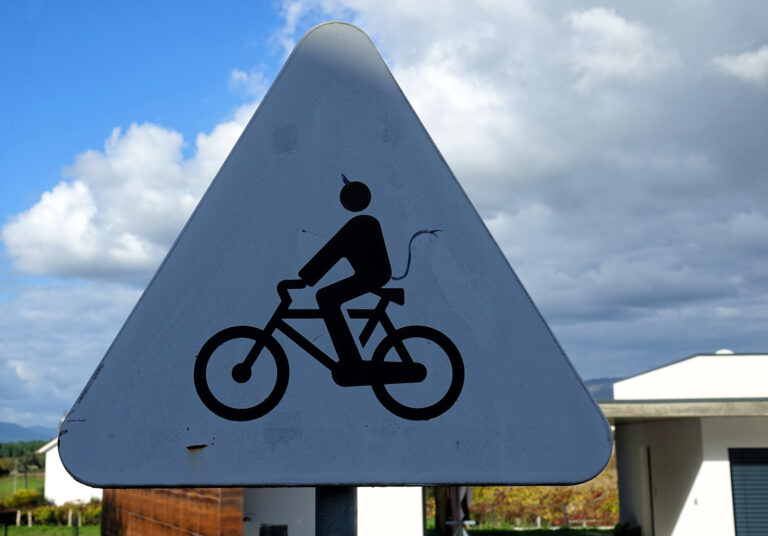
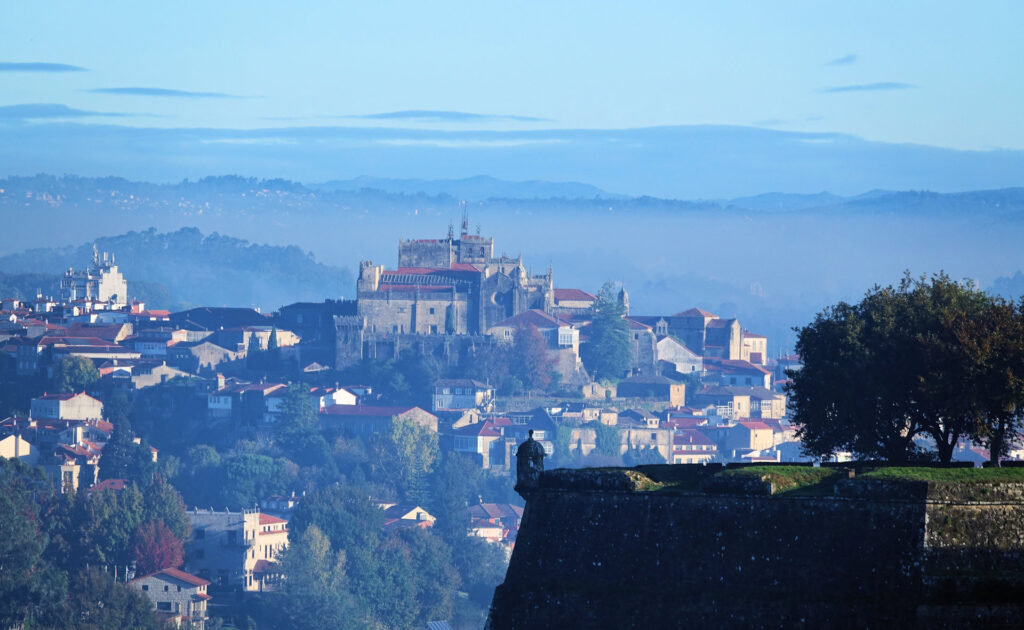
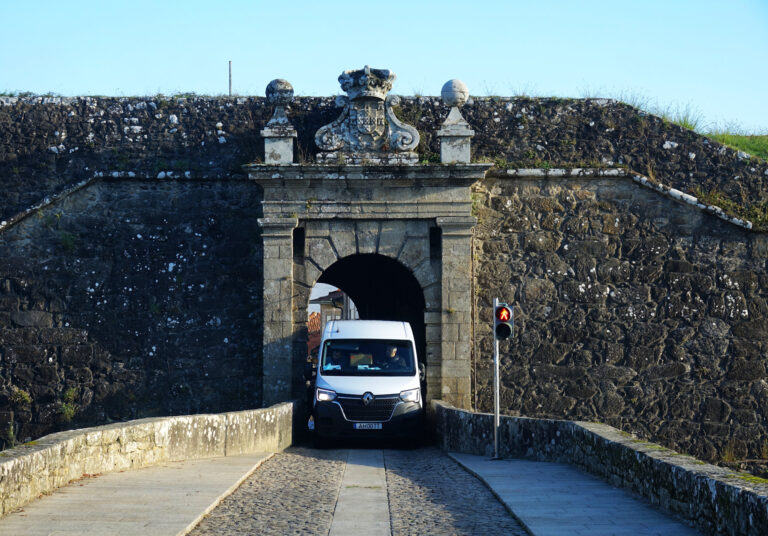
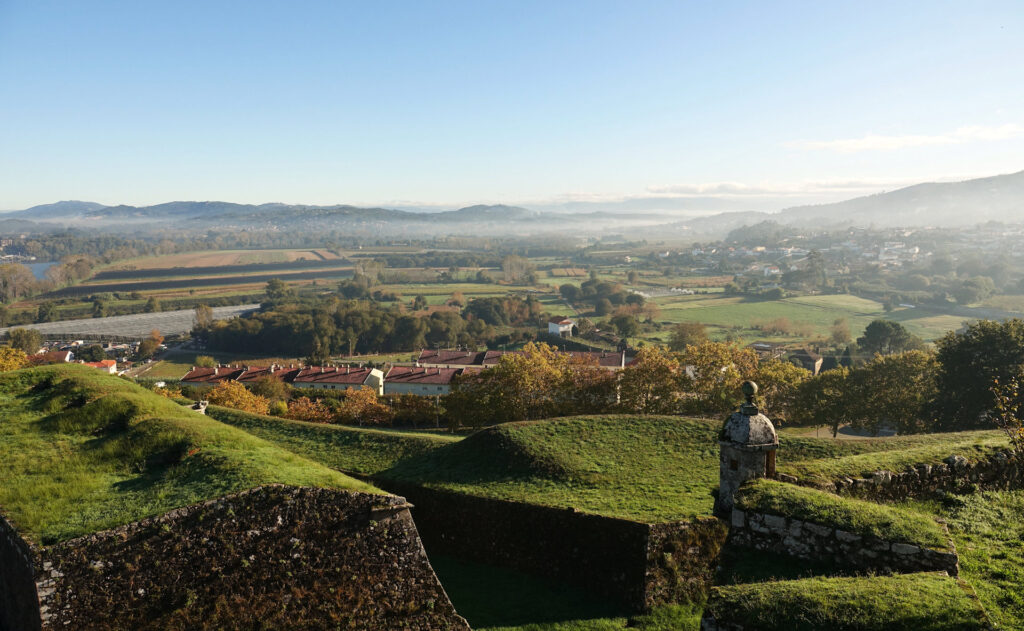

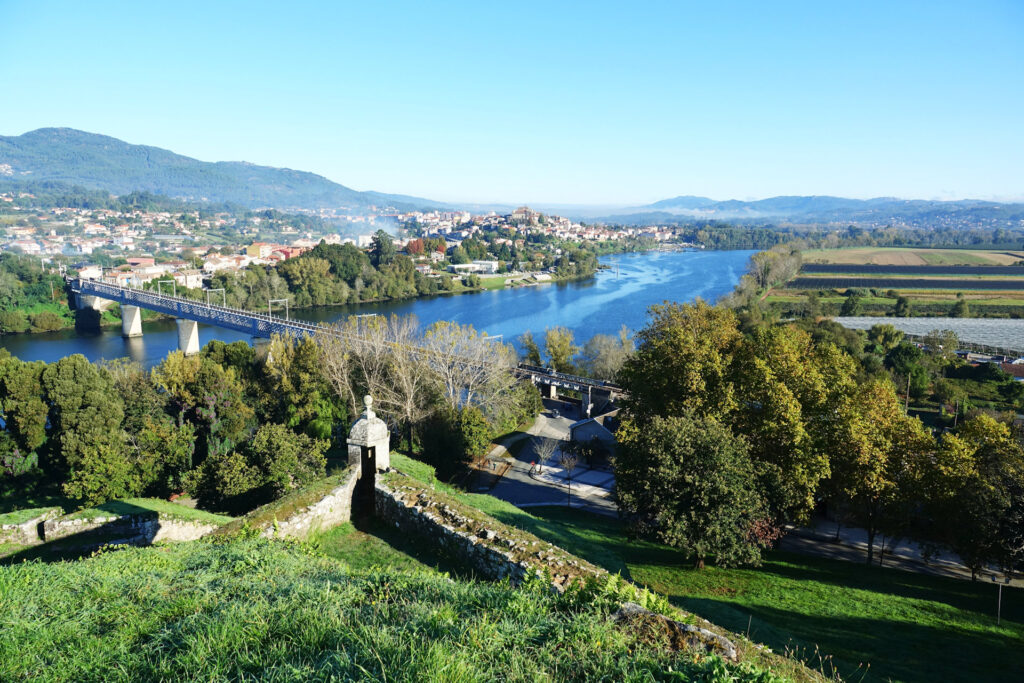


10 Comments. Leave new
Walking the camino now. At 20km from Valenca. I liked your blog very much. I enjoyed recognising the places in the photographs.
Very good blog, photographs and writing.
Many thanks for this.
Alvaro
Hi Alvaro,
Thank you for your nice comment. 🙂 You will hopefully enjoy the walk from Tui to Santiago as well. Make the most of it!
¡Suerte!
I am considering walking the last 100 km starting from Valenca/ Tui. Will I miss out on a lot in the Portuguese section?
Don’t focus on the things you miss out on, instead enjoy the things you will get to see and experience.
If you only have time for walking 100 kilometers, the Tui-Santiago walk is a good one, and it will let you qualify to receive the compostela when you arrive.
If you DO have time for more, I strongly suggest starting in Porto and seeing that city properly first. You can get your credencial at the cathedral there and stamp it there as your first “proof of pilgrimage”. Then maybe mix walking and buses to Tui if you don’t have time to walk it all. I really enjoyed the part between Ponte de Lima and Tui, so if you have a couple of days extra, maybe do that? I have to say Portugal and Spain are both similar and also very different, so getting a taste of the Portuguese side is time well spent. It’s both about how houses are decorated, how people act towards pilgrims, and if you’re interested in it, there’s quite a difference in food and drink.
Thank you so much for replying. Your posts are very helpful and your photos are fantastic.
I really enjoyed reading about your experiences on the Camino! The pictures are great too!
Bonjour
Merci beaucoup pour vos récits et vos superbes photos.
Nous partons le 5 mars pour faire le même chemin que vous.
Pouvez-vous nous dire si il faut réserver les hôtels ou Auberges avant et le prix moyen par hôtel.
Si vous avez des conseils, nous vous remercions d’avance.
Amicalement
Luis
Hi Luis,
Since you start walking in early March, I don’t think you will have problems finding places to stay. The high season is much later in the year. Try to learn how to use a mobile app like Camino Ninja, or use for example this tool to generate a list of possible places to stay:
https://godesalco.com/plan/portugues
You can of course also use normal hotel booking sites on the Internet to find a place to stay. In my experience, it actually often works to show up somewhere and explain that you are a pilgrim and ask nicely if the hotel can give you a pilgrim discount. They can do that, because when you have no reservation, they don’t have to pay a commission to booking.com, hotels.com or similar sites.
It is a little bit cheaper to stay in hotels in Portugal than in Spain, but it’s different for each hotel. I was usually able to find very nice hotel rooms for 30-40 euros per night, including a good breakfast.
Lovely writing! Stunning pictures! Wonderful sharing!
I could feel almost all your steps from Porto to Vila do Conde. I’m originally from Porto and I would bet anything I could walk from the Cathedral to Vila do Conde, following the same road you did, without having to ask for directions or checking the maps or GPS.
When I was younger, I used to visit the Cathedral’s Museum just for fun. I remember that place as one of unique spots I can really feel peaceful and quiet. Reading what you wrote about your visit there is making me want to revisit it next time I go home. Porto is even more magical when it’s raining and foggy, so do feel yourself blessed.
Portuguese ladies still make their laundry on rivers not because they don’t have another choice, but because they prefer to wash some pieces of cloths (or even curtains or tapestries) outside. I’ve heard some of Portuguese ladies advocating clouds get cleaner and fresher when washed on the rivers and dried by the sunlight.
It’s funny how there’s still the idea things are cheaper in Portugal than in Spain. I lived in Spain for 6 years, and unless for a few examples, prices are quite the same between both countries. When I was a child, I used to get Spanish candies from any family member or family’s friend returning from their trips in Spain. “Spanish chocolates and candies are cheaper and better” they used to say. Then I grew older, and I learned from my Spanish friends they usually go to Portugal for cheap sheets and towels. I’m not sure if this is true, and I dare to say these are just excuses for us to keep invading each other in a pleasant and not objectionable way.
I really enjoyed your writing, your pictures, and the fact you did not misspell the Portuguese words.
Many, many thanks!
Lídia
As I and a friend are walking the Portuguese Way this coming May, I thoroughly enjoyed this essay. Your photos are beautiful.